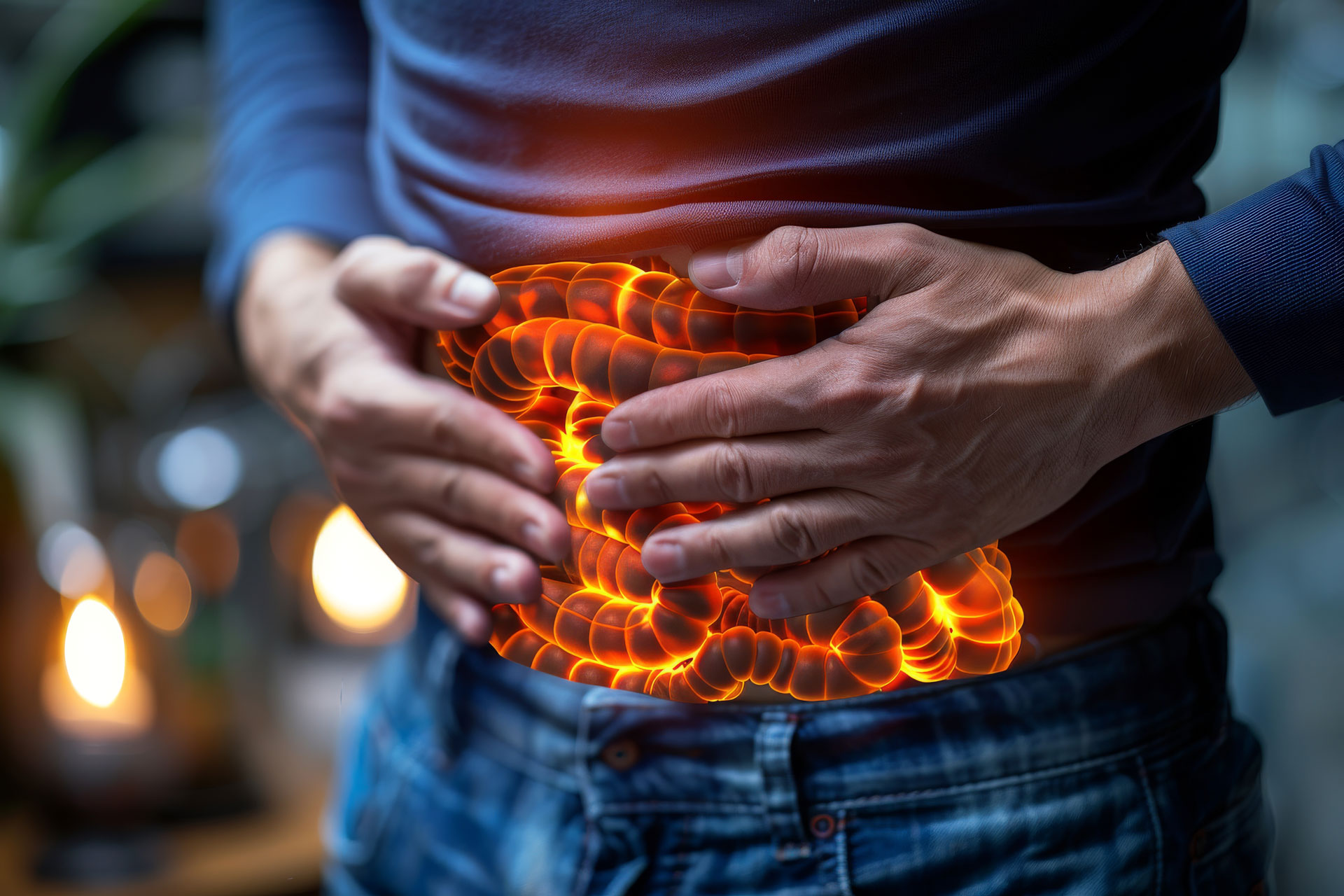Gastrointestinal diagnostics
Identifying and Treating the Causes of Diarrhoea, Irritable Bowel Syndrome, Histamine Intolerance, and Gastrointestinal Infections
More than 30% of the population suffer from unexplained gastrointestinal complaints, which manifest as bloating, recurring diarrhoea, constipation, abdominal pain, or vomiting. Various factors may be responsible, including:
- An unfavourable composition of the intestinal flora (dysbiosis)
- A deficiency in digestive enzymes or bile acids (maldigestion)
- A disturbance in the intestinal absorption of nutrients (malabsorption)
- An extremely high-fat and high-protein diet (malnutrition)
- Bacterial or viral infections of the intestine
- An unhealthy diet
- Use of medications
- Psychological stress
- Endotoxins (e.g. from root-filled or dead teeth) and other toxins
A wide range of laboratory diagnostic analyses can be employed to clarify gastrointestinal symptoms – from detecting an imbalanced intestinal microbiota to identifying disturbed intestinal permeability.
What Intestinal Bacteria Can Do and Why We Need Them
Bacteria generally have a negative connotation, as they are commonly associated with disease. However, they are essential to human health. Current research shows that over 1,000 different bacterial species inhabit the human body, with each person hosting at least 160 species that are directly or indirectly involved in physiological processes such as metabolism, immunity, and protection against other pathogenic organisms.
The bacterial composition of the microbiota is influenced by factors such as age, ethnicity, and lifelong environmental influences (e.g. diet, alcohol, antibiotics). These factors exert selective pressure on the microorganisms that inhabit the intestine. At the same time, however, the intestinal microbiota has the capacity for self-regeneration (resilience), which means that it can restore its balance (homeostasis) after external disturbances like infections or antibiotic treatments.
The intestinal microbiota – the totality of all microorganisms residing in the intesine – is essential to human health.
The Diverse Functions of the Intestine’s Physiological Bacterial Flora:
- Absorption of digested food components
- Participation in detoxification processes
- Promotion of blood circulation
- Immune training and prevention of food allergies
Formation of a natural protective barrier against pathogens and foreign substances
Intestinal Bacteria Help Produce Nutrients and Vitamins
Intestinal bacteria also play a vital role in human metabolism, particularly in the synthesis of vitamins such as K and B12, as well as folic acid. They break down undigested food particles and convert them into short-chain fatty acids such as lactic, acetic, propionic, and butyric acid. These short-chain fatty acids not only enhance energy extraction but also serve as the primary energy source for the cells of the intestinal lining and contribute significantly to the prevention of chronic inflammatory diseases and colorectal cancer.
Intestinal Bacteria Stimulate the Immune System
With a surface area of over 200 m², the intestine has the largest interface with the external environment. Due to the constant presence of bacteria, fungi, viruses, parasites, their metabolic products, toxins, allergens, and food antigens, the intestine plays a major role in acquired immunity. Disruption of microbial diversity due to poor diet, stress, or medication is often associated with an increased incidence of infections, allergies, and similar conditions.
The intestinal immune system is tasked with the complex job of maintaining a balance between tolerance of harmless microbes and immunity to harmful pathogens. This balance is achieved through a range of regulatory interactions between bacteria, intestinal epithelial cells, and immune cells of the gastrointestinal tract.
Key Indicators of a Healthy Intestinal Mucosa
The two most important mucosa-protective bacterial species are Akkermansia muciniphila and Faecalibacterium prausnitzii.
Akkermansia muciniphila has anti-inflammatory properties and supports the maintenance of an intact intestinal barrier. Faecalibacterium prausnitzii is one of the major butyrate-producing bacteria in the colon. Its production of this short-chain fatty acid significantly reduces inflammation in the intestine and has a positive influence on chronic intestinal diseases such as Crohn’s disease, ulcerative colitis, and irritable bowel syndrome.
What disrupts a healthy intestinal flora?
Unhealthy dietary habits negatively affect the development of the microbiota. During adolescence and adulthood, the following factors particularly impair the development and maintenance of the microbiota:
- Stress
- Industrially processed foods
- Ingredients such as artificial sweeteners, alcohol, or environmental toxins in food
Furthermore, antibiotic therapy which does not differentiate between pathogenic and beneficial bacteria is often the main cause of dysbiosis. Therefore, it should always be carefully evaluated whether antibiotic treatment is really necessary.
Disease Risks Associated with Microbiome Imbalances
Disturbances of the microbiota (e.g. due to dysbiosis), reduced microbial diversity, or improper colonisation of the intestine can be risk factors for a wide range of diseases.
These include, among others:
- Disturbed intestinal motility (diarrhoea or constipation)
- Irritable bowel syndrome (abdominal pain, bloating, feeling of fullness, diarrhoea, constipation, flatulence)
- Cardiovascular diseases
- Metabolic disorders (diabetes mellitus, obesity, lipid metabolism disorders)
- Autoimmune diseases such as allergies or psoriasis
- Chronic inflammatory bowel diseases (ulcerative colitis, Crohn’s disease)
- Tumours
- Neurological and psychiatric disorders

